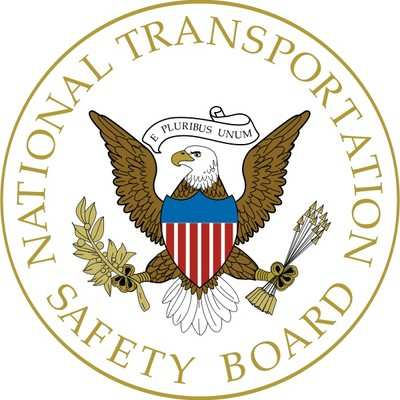Sat, Sep 21, 2024
Uncommanded Movement Of The Trimmable Horizontal Stabilizer Control Wheel For Reasons That Could Not Be Determined...
Location: Los Angeles, California Incident Number: DCA22LA212
Date & Time: September 22, 2022, 12:00 Local Registration: N393HA
Aircraft: Airbus A330-243 Aircraft Damage: None
Defining Event: Flight control sys malf/fail Injuries: 290 None
Flight Conducted Under: Part 121: Air carrier - Scheduled

Analysis: The flight crew reported that, when the airplane climbed through flight level 360, the trimmable horizontal stabilizer (THS) trim wheel began to move “very quickly” forward and aft, creating small pitching oscillations. No message appeared on the airplane’s electronic centralized aircraft monitor, and no flight deck alerts annunciated. The crew decided to turn off the autopilot to isolate the malfunction. However, when the autopilot was off, the trim wheel continued to move erratically. The crew then reengaged the autopilot, and small pitch oscillations resumed. These oscillations, which were below the threshold to trigger a fault, were partially countered by flight control system inputs, but the trim wheel continued its uncommanded movement. The first officer (the pilot flying) then turned off the autopilot and manually flew the airplane for the rest of the flight while the captain (the pilot monitoring) managed the situation.
The flight crew contacted air traffic control to declare an emergency and advise that fuel would need to be jettisoned before the airplane returned to the airport. Afterward, fuel was jettisoned until the airplane reached its maximum landing weight. The airplane landed uneventfully, and the emergency was terminated after landing. The airplane’s Post Flight Report information showed the “PITCH TRIM ACTR [actuator] OVERRIDE SWITCH” fault message. The maintenance crew at the airport replaced the pitch trim actuator (a subcomponent of the THS actuator), and an operational test of the THS actuator was successful.
One possible scenario for the uncommanded pitch trim wheel movement involved a failure or malfunction of a subcomponent of the THS actuator (the No. 1 digital electronic module, which digitizes the analog signals from THS position sensors. Extensive testing of the THS actuator and its subcomponents, including the incident pitch trim actuator and the No. 1 digital electronic module, was conducted at the manufacturers’ facilities. However, the testing did not identify the specific reason for the uncommanded pitch trim wheel movements during the incident flight. As a result, the investigation was unable to determine the cause of the anomaly based on the available evidence. It is important to note that this investigation found that the anomaly appeared to be isolated to components that were either removed and repaired or replaced on the incident airplane. Further, the incident airplane had no pitch or pitch trim flight control faults related to the circumstances of this incident since the THS
actuator was removed and replaced in November 2022.
Probable Cause and Findings: The National Transportation Safety Board determines the probable cause(s) of this incident to be --
Uncommanded movement of the trimmable horizontal stabilizer control wheel for reasons that could not be determined based on the available evidence.
More News
“In recent years, park officials have observed a rise in illegal drone activity, which they attribute to the increasing affordability and availability of consumer drones. In >[...]
Aero Linx: Aeronautical Repair Station Association (ARSA) ARSA is devoted to the worldwide civil aviation maintenance industry—from its global corporations to the small, inde>[...]
During Cruise Flight At 4,500 Ft, The Engine Stopped Producing Power Without Any Warning On October 4, 2025, about 2130 central daylight time, a Lancair 320 airplane, N431M, was de>[...]
With The eSPRG Only Weeks Away From Its Start Date, A-AF Will Help To Support Sport Flyers, Worldwide With the all-new and all-digital SportPlane Resource Guide getting ready for p>[...]
Also: USAF Pilots, Advanced Aircrew Academy, ATC Hiring, Hop-A-Jet Sues Pan American is attempting a comeback. Aviation merchant bank AVi8 Air Capital, alongside Pan American Globa>[...]
 Aero-News: Quote of the Day (10.27.25)
Aero-News: Quote of the Day (10.27.25) ANN's Daily Aero-Linx (10.27.25)
ANN's Daily Aero-Linx (10.27.25) NTSB Prelim: Lancair 320
NTSB Prelim: Lancair 320 Airborne Programming Continues Serving SportAv With 'Airborne-Affordable Flyers'
Airborne Programming Continues Serving SportAv With 'Airborne-Affordable Flyers' Airborne-Flight Training 10.23.25: PanAm Back?, Spirit Cuts, Affordable Expo
Airborne-Flight Training 10.23.25: PanAm Back?, Spirit Cuts, Affordable Expo



